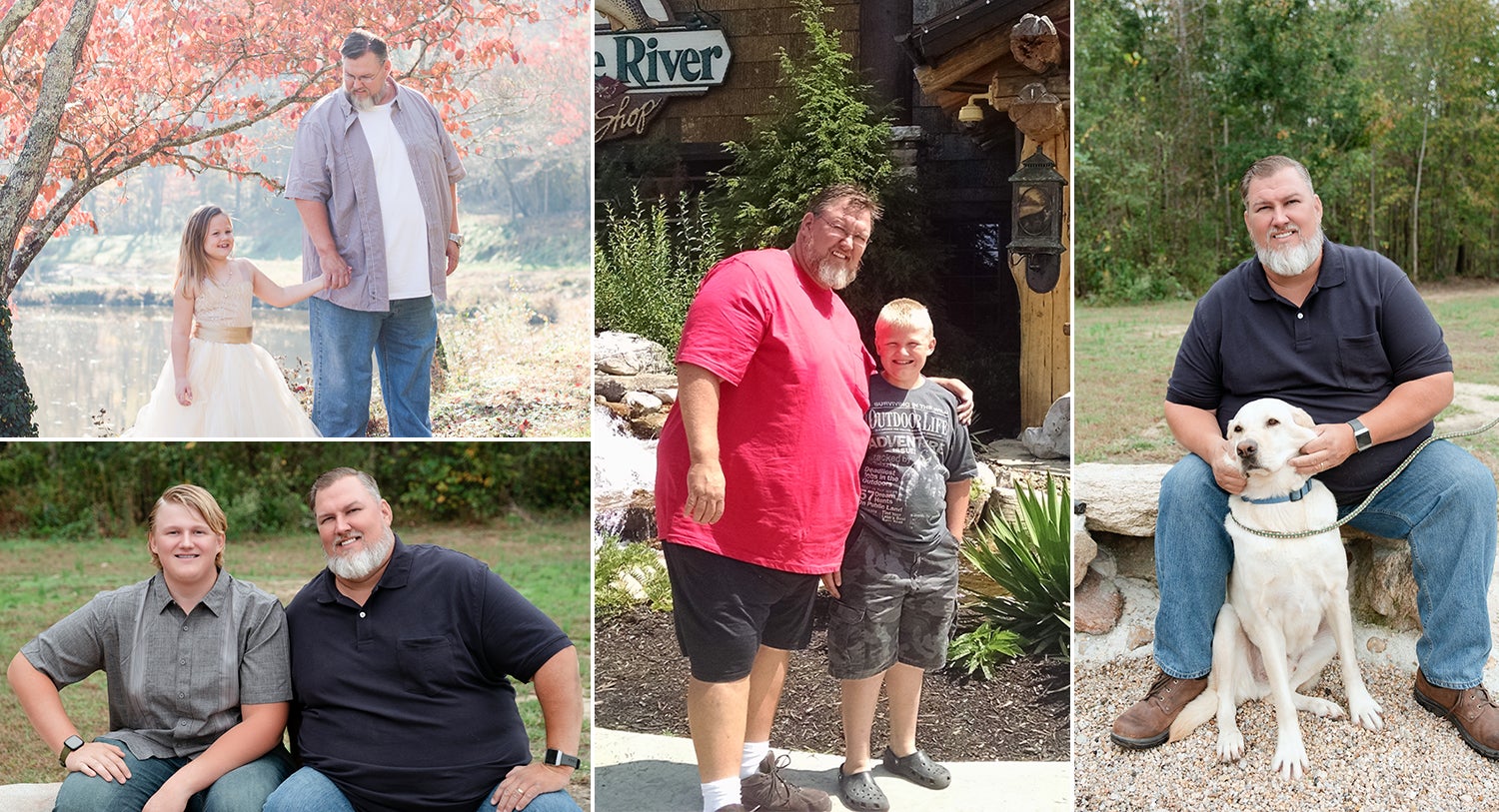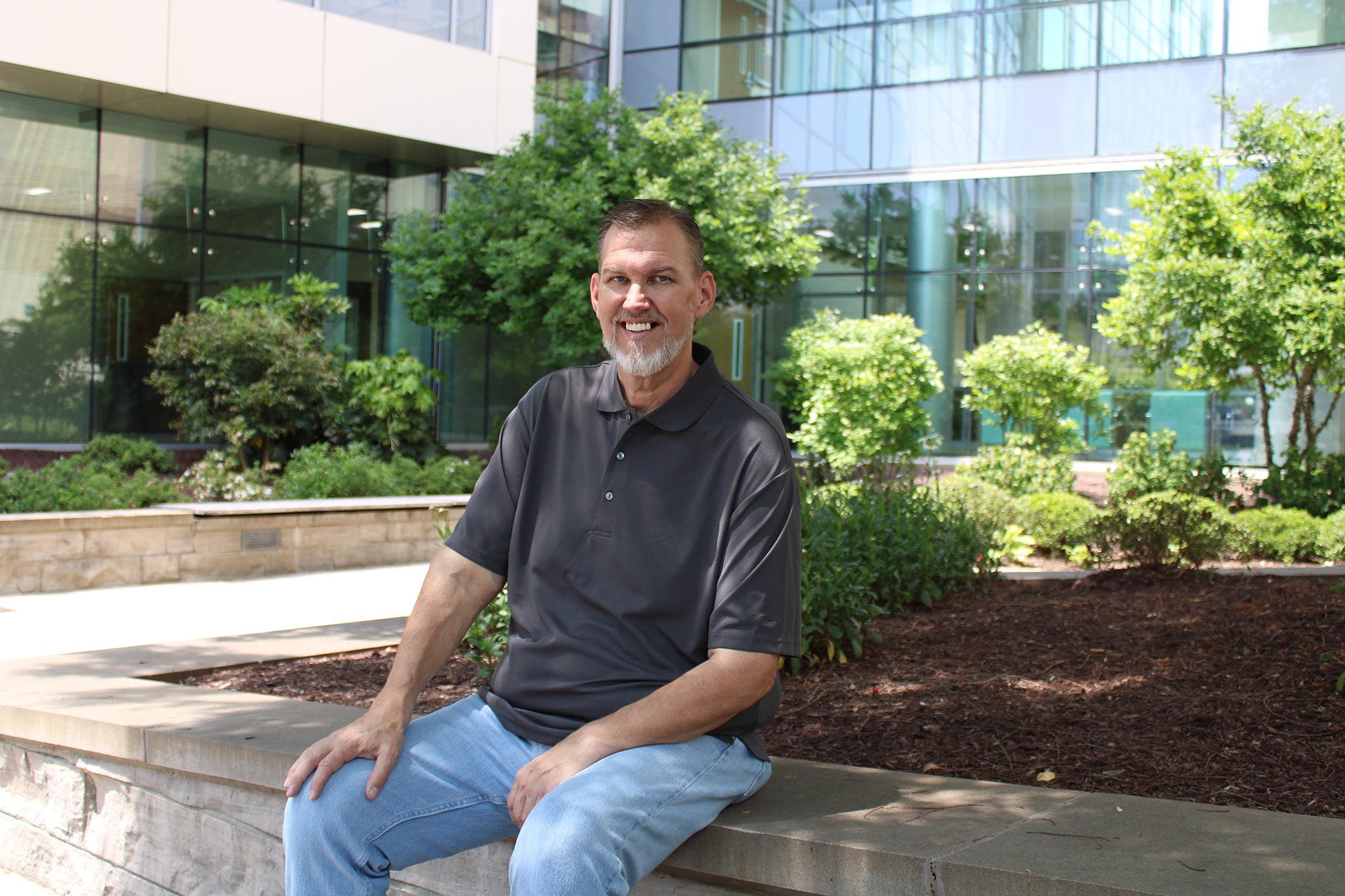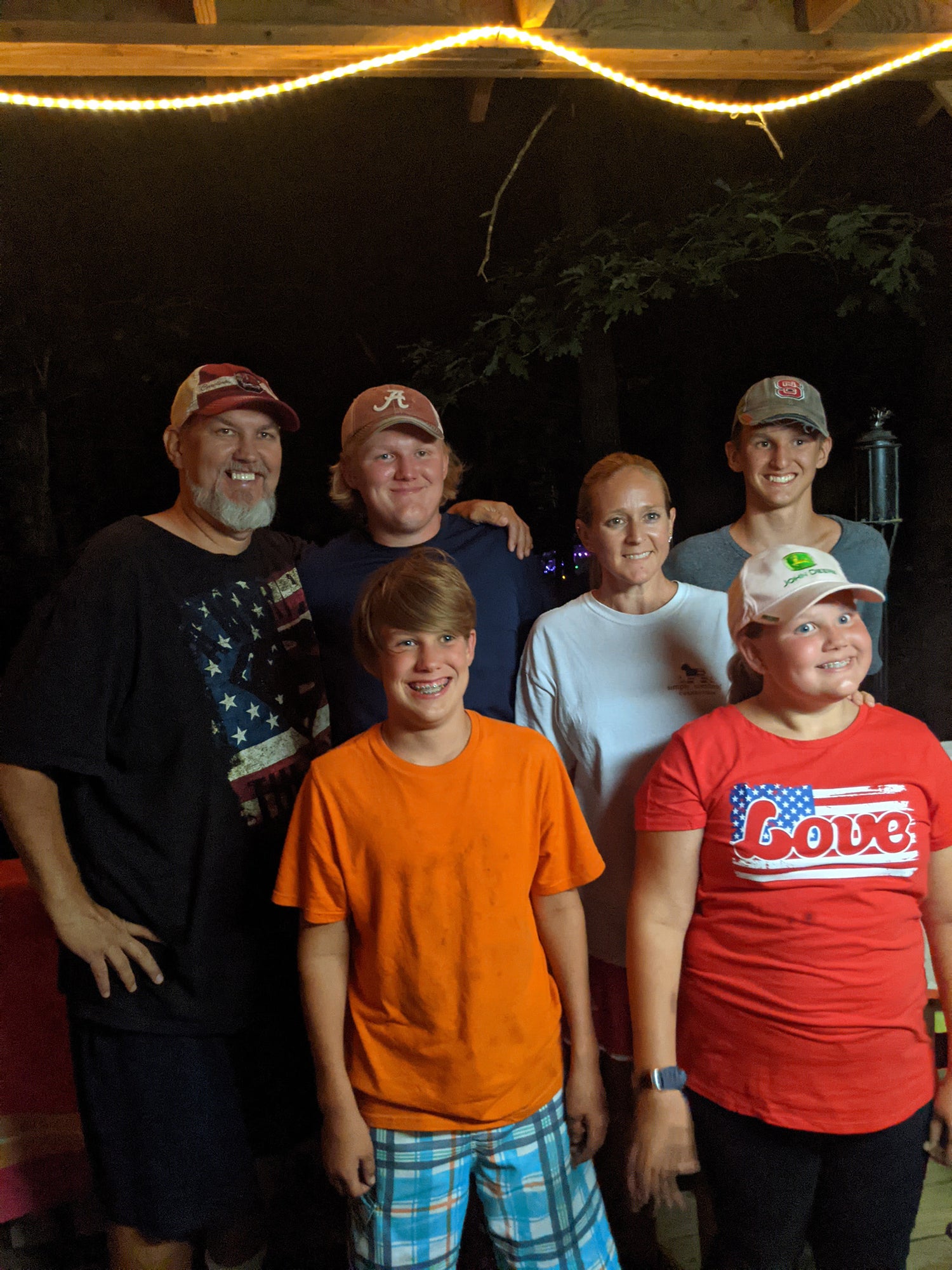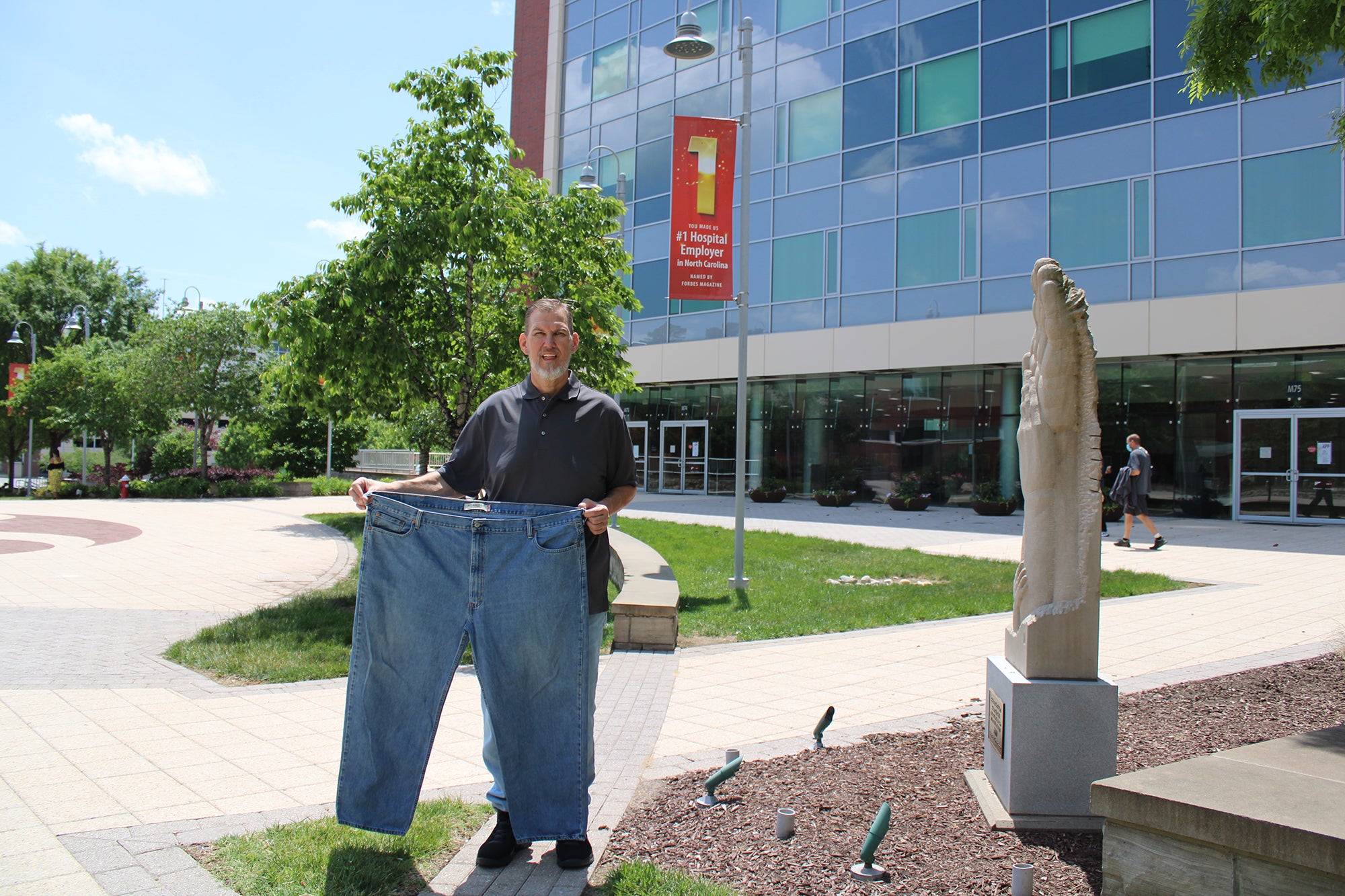A New Beginning After Bariatric Surgery: Jamie Michael's Story
May 27, 2022Obesity impacted every aspect of Jamie Michael’s life, from numerous health issues to isolation from loved ones. Eventually, with the help of his primary care provider, Marie Debnam, MD, Jamie determined that medical intervention was no longer an option; it was necessary.

So, on January 15, 2021, Jamie underwent gastric bypass surgery.
“I decided to get surgery because my life was on a downward spiral. I struggled with health problems and alienation from activities with my wife and kids. I love my wife, Kelly, and I’m so proud of my four children who were then 11, 12, 14 and 15. I had to do this for them.”

How It All Began
In the fall of 2020 when Jamie stepped into WakeMed Bariatric Surgery & Medical Weight Loss — Cary, he was 454 pounds and in pretty poor health.
“I had severe diabetes. I was maxed out on two prescription insulin injections. I took them daily and still couldn’t get my blood sugar below 200.”
Jamie also had dangerously high blood pressure, high cholesterol, severe gout and fluid retention in his legs.
“The gout was incredibly painful. I was also on water pills for fluid build up, and my doctor told me I could have a heart attack at any moment or end up with congestive heart failure due to all the fluid.”
Jamie consented to joining required virtual bariatric surgery support group meetings each second Wednesday of the month in preparation for his procedure. Meeting attendees examined the radical changes in body composition, mindset and appetite that would follow bariatric surgery.
Then, that winter on December 15, 2020, during a consultation with bariatric surgeon Ann Chung, MD, FACS, Jamie decided that gastric bypass was his best surgical option, so he began pre-surgical preparations for the procedure.
About Gastric Bypass
Roux-en-Y gastric bypass was first performed over 50 years ago and is still considered the gold standard for bariatric surgery. This surgery limits the amount of food one can eat by creating a small stomach and changing the digestive tract by bypassing the remainder of the stomach and first part of the small intestines.
The food then passes out of the pouch through a small opening into the small intestine. Most of the stomach and the first part of the small intestine are bypassed by the food.
Patients lose weight by eating smaller meals and experiencing less hunger.
Pre-surgical Work
Prior to surgery, Jamie was immediately placed on a liver reduction diet to help lower his A1C score, which is a blood test that measures average blood sugar levels over the prior three months. Since Jamie had type 2 diabetes, his A1C score was very high. High A1C levels are associated with diabetes complications, to include:
- kidney disease
- eye disease
- stroke and cardiovascular disease
- metabolic syndrome
- neuropathy
Too high of an A1C score also rendered surgery dangerous since it could result in kidney failure. It was paramount for this number to move into a safer range.
“At that time, my A1C was at 10.1 or higher, and it needed to get down a couple points. That required me to go on a liquid liver reduction diet. It helped me lose a little weight and also prepared me for the diet I’d be on following surgery.”
Gratefully, the diet proved successful. Jamie lost 20 pounds and reduced his A1C to an acceptable range. With this accomplished, he went on to complete several other pre-surgical evaluations.
 Jamie credits his wife Kelly for doing all the heavy lifting during that time.
Jamie credits his wife Kelly for doing all the heavy lifting during that time.
“I 100% owe it to Kelly Michael for getting me through all those appointments. She was scheduling everything, keeping up with everything and was completely there for me. Honestly, she did everything.”
Jamie visited a nutritionist to discuss his post-surgery diet, which involved phasing. In the initial weeks following surgery, he was scheduled for a required liquid diet. Next, he could transition into purees. With that completed successfully, he could be on soft foods. Thereafter, he could slowly and carefully reintegrate normal solids, monitoring how his body reacted to the different foods.
Jamie met with a physical therapist to help him outline a safe exercise regimen after surgery. The top priority was walking. He was also encouraged to lift light weights to tone excess skin — a result of fast weight loss.
A mental health therapist counseled Jamie prior to his procedure. The therapist helped Jamie understand how to set his mindset for portion control. The therapist also explored the possibility of a hidden food addiction, since secret eating of the wrong foods could derail his surgery and endanger his life.
A WakeMed cardiologist also evaluated Jamie prior to surgery. With severe fluid retention a potential complication of surgery, the cardiologist ensured that his heart could handle the procedure.
Last, Jamie met with an anesthesiologist to go over medications and allergies prior to surgery.
Surgery Day
On the day of his procedure, Jamie arrived to WakeMed Cary Hospital at 9:00 in the morning. His procedure was scheduled for 11:00 a.m. However, upon arrival, the care team took Jamie’s blood sugar level. It was too high, and they informed Jamie that if they couldn’t get his blood sugar down, the procedure would need to be rescheduled.
“When I went into surgery, my blood sugar was 215. They said if they couldn’t get it below 200 I couldn’t have surgery, so we waited. Amazingly, as time passed, it went down to 199, so they prepped me for surgery.”
Jamie’s procedure was two and half hours long and a complete success.
He says, “I had to get up and walk after the surgery. I was walking up and down that hall.” Jamie chuckles, “They were surprised and said, ‘Woah. Walk, but don’t walk that much.'”
After the procedure, Jamie also had to attend a mandatory meeting with eight other patients who’d just undergone bariatric surgery.
Jamie recalls, “A nurse was required to walk me down to the room. Then, I just walked on in by myself, and the two women running it were thinking I was in the wrong room because I was walking so well. I had no pain. This was just 17 hours post surgery.”
Feeling great and excited for the future, Jamie spent just one evening (21 hours) in the hospital and was released home the following day.
Jamie’s Dramatic Weight Loss
 In just 15 months, Jamie has lost exactly 200 pounds, and his current weight sits at 254.2 pounds. At 6’5” tall, Jamie is a healthy weight, and his weight has not plateaued quite yet. Dr. Chung believes he could get down to between 225 and 230 pounds.
In just 15 months, Jamie has lost exactly 200 pounds, and his current weight sits at 254.2 pounds. At 6’5” tall, Jamie is a healthy weight, and his weight has not plateaued quite yet. Dr. Chung believes he could get down to between 225 and 230 pounds.
“When I went into surgery, I was wearing a 56×32 in pants. Now I wear a 36×32, so I’ve dropped 20 pants sizes since the operation!”
He has also seen an incredible improvement in his overall health.
“My gout hasn’t flared up in over a year. I think it’s gone. I no longer have high cholesterol. My blood pressure is now in a normal range. In fact, I quit taking the medication about a year ago. I was on it for four months after surgery, and then my doctor weaned me off, moving me from 50 grams, to 40, then to 25 and now 0. I don’t need it anymore! And, my fluid retention is mostly gone. I take a water pill maybe one time about every other month.”
Most importantly, Jamie’s diabetes is under control. The day after his bariatric surgery, the care team took Jamie’s blood sugar. It was low enough that he did not need to take insulin.
Jamie says, “Before surgery was the last time I ever had to take insulin medication. Now my blood sugar is in a completely normal range, and they told me they couldn’t have asked for anything more perfect. Before surgery, I had blurry vision because of diabetes. Now my eyesight is improved, and I have no more symptoms.”
Jamie’s Diet and Exercise
Jamie no longer struggles with overeating. To the contrary, his appetite has significantly declined. In fact, now his wife has to remind him to eat.
“I don’t eat much anymore because I don’t really have an appetite anymore. The food I eat is because I have to eat it. Ninety-five to 100 grams of protein a day is my goal.”
Jamie’s activity level has also shot up.
“I do have a workout regimen. It is more about being active. The biggest thing I try to pay attention to is using five pound barbell weights to tone up excess skin.
“My main hobby now is spending time with my kids. I can play basketball with my kids, and they love it. Instead of sitting and saying what they should have done, I can get out there and do it. I can enjoy the backyard pool with them now. I couldn’t before because I couldn’t climb the ladder to get in.”
A New Lease on Life
 Jamie is also now more of a support to his wife during his children’s activities. All four of their children play sports. Prior to surgery, Jamie’s wife had to climb to the top of the stadium to film their games while Jamie sat near the bottom of the bleachers because walking up the stadium stairs was too painful for him prior to surgery.
Jamie is also now more of a support to his wife during his children’s activities. All four of their children play sports. Prior to surgery, Jamie’s wife had to climb to the top of the stadium to film their games while Jamie sat near the bottom of the bleachers because walking up the stadium stairs was too painful for him prior to surgery.
Since the family also enjoys movies, Jamie’s wife and children would go to the theater, while Jamie sat at home alone because he could not fit into the theater seats. Now they can enjoy this fun, family pastime together.
“I couldn’t do much of anything with my family before my surgery. I was very alienated. And now, my life has changed completely. I want to do everything. I feel that the whole world has opened back up to me. It’s seriously a new beginning for my life. Now, if my family wants to do anything at all, I am like, ‘Yeah, let’s do it.'”
About WakeMed Bariatric Surgery and Medical Weight Loss
Weight Loss is a journey that starts with a single step and ends with better health. If you want to achieve or maintain a healthy weight, the team of experts at WakeMed is here for you.
From our board-certified physicians with expertise in medically-directed weight loss, to bariatric surgery and non-surgical weight loss procedures, to our multidisciplinary team of diet and exercise specialists, we enjoy working closely with our patients to determine the best path to good health. Because, in the end, it’s not just what you lose; it’s the health, confidence – and all the other good things – that you gain.
Offering a full continuum of services, WakeMed is committed to supporting patients on their journey to losing weight – or simply maintaining a weight that’s healthy for you.
